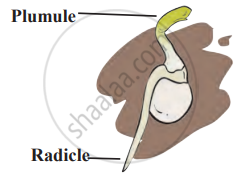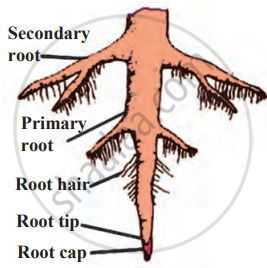Topics
Plant Life
The Leaf
- Root
- Types of Root
- Shoot System
- Stem
- The Structure of a Plant
- Types of Leaf
- Autotrophic Plants
- Insectivorous Plants
- Significance of Photosynthesis
- Transpiration
- Significance of Transpiration
- Modifications of Leaf
- Vegetative Reproduction
- Flower
The Flower
- Flower
- Structure of a Bisexual Flower
- Types of Flower
- Sexual Reproduction in Flowering Plants
- Pollination
- Self Pollination (Autogamy)
- Cross Pollination
- Agents of Pollination
- Fertilization Process
- Fruit
- The Seed
- Classification and Structure of Seeds
- Structure of a Dicotyledonous Seed
- Structure of Monocotyledonous Seed
- Formation of Seed and Fruit
- Germination in Some Common Seeds
The Cell
- Cell: Structural and Functional Unit of Life
- The Invention of the Microscope and the Discovery of Cell
- Organisms Show Variety in Cell Number, Shape and Size
- Cell Theory
- Plant Cell and Animal Cell
- Structure of the Cell
- Plasma Membrane
- Semi-permeable Membrane (Cell Membrane)
- Cell Wall - “Supporter and Protector”
- Cytoplasm - “Area of Movement”
- Nucleus - “Brain” of the Cell
- Plastids
- Non-living Substances Or Cell Inclusion
- Cell Division: an Essential Life Process
- Protoplasm
Human Body
Digestive System
- Food and Its Types
- Nutrients and Nutrition
- Component of Food
- Human Digestive System
- The Mouth and Buccal Cavity
- The Teeth and Its Structure
- Tongue
- The Salivary Glands
- The Food Pipe/Oesophagus
- The Stomach
- The Small Intestine
- Liver
- Pancreas
- Absorption of Food
- The Large Intestine
- Assimilation of Food
- The Aching Tooth
- Oral Health
Respiratory System
Circulatory System
- Blood Circulatory System in Human
- Blood
- Composition of Blood: Plasma (The Liquid Portion of Blood)
- Composition of Blood: Red Blood Cells (Erythrocytes)
- Composition of Blood: White Blood Cells (Leukocytes)
- Composition of Blood: Blood Platelets (Thrombocytes)
- Functions of Blood
- Human Heart
- Blood Vessels
- Circulation of Blood in the Heart (Functioning of Heart)
- Types of Closed Circulation
- Heart Beat - Heart Sounds "LUBB" and "DUP"
- Blood Pressure (B.P.)
- Blood Transfusion and Blood Groups (ABO and Rh system)
- Keeping the Heart Healthy
Health and Hygiene
Habitat and Adaptation
- Habitat
- Adaptations and Its Types
- Adaptations of Plants
- Adaptation in Aquatic Plants (Hydrophytes)
- Adaptation in Desert Plants (Xerophytes)
- Adaptation in plants of snowy regions
- Adaptations in Seeds for Transport Through Air
- Adaptation in Animals
- Adaptation in Aquatic Animals
- Adaptation in Desert Animals
- Adaptation in Mountain Animal
- Adaptation in Aerial Animals
- Introduction
- Experiment
Introduction
The root is the part of the plant that grows below the soil and helps anchor the plant in the ground. When a seed starts to grow, two important parts appear:
- Radicle: This is the part that grows downward into the soil, forming the root.
- Plumule: This is the part that grows upward and forms the shoot, or stem.
The taproot is the main root that forms from the radicle and grows deep into the soil. From this main root, smaller secondary roots spread out in all directions, helping the plant stay firmly rooted in the ground.
Near the tip of the root, there are tiny, hair-like structures called root hairs. These root hairs help the plant absorb water and nutrients from the soil. The very tip of the root is delicate and keeps growing, so it has a root cap that protects it from injury as it pushes through the soil.

Formation of root

Taproot
Experiment
1. Aim: To observe and understand the process of germination in seeds.
2. Requirements: Conical flask, crumpled paper, water (to moisten the paper), and moth beans or gram seeds (soaked)
3. Procedure
- Moisten a ball of crumpled paper with water and place it at the bottom of the conical flask.
- Place some soaked moth beans or gram seeds between the moistened paper and the inner wall of the conical flask.
- Keep the flask in a warm place, ensuring the paper remains moist but not too wet.
- Observe the seeds daily for 2-3 days, noting any changes.
4. Observation: After 2-3 days, you will notice the seeds begin to sprout. Roots and shoots will emerge from the seeds.
5. Conclusion: The experiment demonstrates the germination process, where soaked seeds begin to grow when provided with moisture and warmth. The seeds sprout, forming roots and shoots, showing how plants begin their life cycle.
